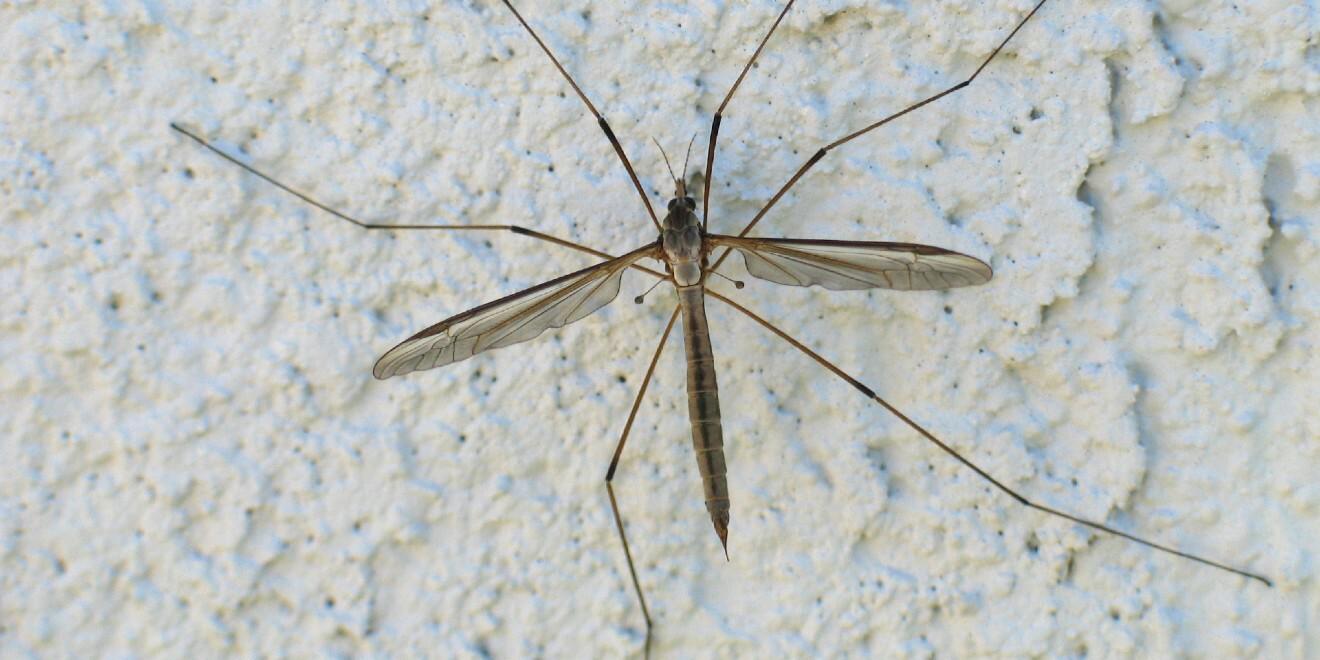Meet the Crane Fly – A Gentle Giant
Posted by Mosquito Squad
September 24, 2024

Many people are quick to shoo away crane flies because they have large bodies and resemble mosquitoes. While they’re not the prettiest insect and their size can be off-putting, crane flies are much more friend than foe. Get to know this common pest and tips to manage their presence around your home!
What Are Crane Flies?
Crane flies, often called mosquito hawks, are large flies known for their slender bodies, extensive legs (typically 4 inches long!), and lengthy thin wings. Their distinct legs and transparent wings lead many to think of them as oversized mosquitoes. Like mosquitoes, crane flies are commonly found in moist environments such as wetlands, gardens, and near bodies of water. But unlike mosquitoes, crane flies don’t bite or transmit diseases
What Do Crane Flies Eat?
Crane fly larvae live in the soil and feed on decaying organic matter, roots, small insects and other vegetation. This makes them important decomposers; they support soil health. Adult crane flies eat nectar or other plant materials. However, the adult crane fly life expectancy is typically only a few days and their main purpose is to procreate, so many adult crane flies never eat and instead prioritize finding a mate.
Do Crane Flies Eat Mosquitoes?
Despite sometimes being referred to as mosquito hawks, adult crane flies do not eat mosquitoes. But their larvae will feed on mosquito larvae! So, the flies do help control mosquito populations in humid and wet areas.
Are Crane Flies Harmful? More Importantly, Do Crane Flies Bite?
Crane flies don’t bite or sting, and they are ultimately harmless to people and pets. However, during their brief lives, crane flies quickly reproduce and lay up to 300 eggs at once! This means that, where there are a couple of crane flies, there can quickly accumulate more.
How to Get Rid of Crane Flies
While adult crane flies have a short lifespan, it can be a nuisance to have a huge swarm of them around your home. Here are some methods to control crane flies:
- Clean and minimize water sources. Crane flies thrive in wet conditions. Reduce excess moisture in your garden or lawn by avoiding over-watering and maintaining proper drainage. Regularly clean constant sources with water, such as bird baths and pools, to help control populations. Additionally, dump standing water where it collects outdoors in fire pit covers, buckets, kids’ toys, and more.
- Remove organic debris. Keep your yard free of excess organic matter, like leaf and wood piles. These spots provide a great place for crane flies to shelter and lay eggs.
- Use professional pest control. For the ultimate crane fly deterrent, contact professionals like the Mosquito Squad team near you. Our barrier spray treatment can kill crane flies on contact and deter them from your property for up to 21 days following treatment.
Let’s Manage Flying Insects in Your Yard!
If your yard attracts crane flies, there are likely other types of flies buzzing around. The Squad Fly Control pest package from Mosquito Squad is the perfect service to target and control many types of flies with one convenient treatment!
Get started with crane fly control when you request a quote online or call our team at (877) 332-2239 to get started.
